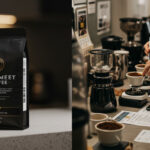
Introduction to Special Coffee

Table of Contents
ToggleWhat Makes Coffee “Special”?
Specialty coffee is more than just a beverage—it’s an experience. Unlike standard coffee, specialty coffee is defined by its exceptional quality, unique flavor profiles, and meticulous production process. It’s the result of a perfect harmony between high-quality beans, precise brewing techniques, and a deep appreciation for the art of coffee making.
What sets specialty coffee apart is its traceability. From the farm to your cup, every step is carefully monitored to ensure the highest standards are met. This includes:
- Growing conditions: Specialty coffee is often grown in specific microclimates that enhance its flavor.
- Harvesting methods: Only the ripest cherries are handpicked to ensure consistency.
- Processing techniques: Whether washed, natural, or honey-processed, each method adds distinct characteristics to the beans.
The Importance of Quality Beans in Specialty Coffee
At the heart of every great cup of specialty coffee are the beans themselves. Quality beans are the foundation of flavor, and they’re what make specialty coffee truly special. These beans are typically Arabica, known for their complex and nuanced flavors, as opposed to the more bitter and robust Robusta beans often found in commercial blends.
Key factors that contribute to the quality of specialty coffee beans include:
- Origin: The region where the beans are grown plays a significant role in their taste. For example, beans from Ethiopia often have floral and fruity notes, while those from Colombia tend to be richer and nuttier.
- Altitude: Higher altitudes generally produce beans with more acidity and complexity.
- Freshness: Specialty coffee is roasted in small batches to preserve its flavor profile, ensuring that every cup is as fresh as possible.
Investing in quality beans is essential for anyone looking to elevate their coffee experience. Whether you’re a home barista or a coffee enthusiast, starting with the right beans is the first step toward brewing something truly extraordinary.
Key Characteristics of Special Coffee
Complex Flavor Profiles
Specialty coffee is celebrated for its complex flavor profiles, which can range from sweet and fruity to floral and nutty. These flavors are influenced by factors such as the coffee’s origin, variety, and processing method. For instance, Ethiopian coffees often exhibit bright, berry-like notes, while Colombian coffees might lean toward caramel and chocolate undertones. Exploring these nuances is like tasting a fine wine—each sip reveals something new.
Aroma: The Signature Scent of Premium Coffee
The aroma of specialty coffee is one of its most defining characteristics. From the moment you open a bag of freshly roasted beans, you’re greeted with a captivating scent that can range from citrusy and floral to earthy and spicy. This aroma isn’t just pleasant—it’s a preview of the flavors you’ll experience in your cup. The fresher the beans, the more vibrant the aroma, so always aim to use coffee within a few weeks of roasting.
Acidity and Balance: The Perfect Harmony in Every Sip
Acidity in coffee doesn’t mean sourness—it refers to the bright, tangy quality that gives coffee its liveliness. Specialty coffee often boasts a well-balanced acidity that complements its other flavor elements. For example, a coffee with citrusy acidity might pair beautifully with its natural sweetness, creating a harmonious cup. Achieving this balance is a hallmark of expertly roasted and brewed specialty coffee.
- Sweetness: Often reminiscent of honey, caramel, or ripe fruit.
- Fruity Notes: Think berries, citrus, or tropical fruits.
- Floral and Nutty Undertones: From jasmine-like florals to almond or hazelnut hints.
“Specialty coffee is not just a beverage—it’s an experience. Every cup tells a story of its origin, craft, and care.”
The Role of Origin and Processing
How Geography Influences Coffee Flavor
Coffee is a global treasure, but its flavor profile is deeply rooted in its birthplace. Geography plays a pivotal role in shaping the taste of coffee, from the altitude of the farm to the climate and soil composition. High-altitude regions, such as the Andes in Colombia or the Ethiopian highlands, often produce beans with bright acidity and complex, fruity notes. In contrast, lower-altitude coffees tend to have a fuller body and more balanced, chocolatey flavors. The mineral-rich volcanic soils of Central America or the tropical climates of Southeast Asia also contribute unique characteristics to the final cup. In essence, every sip of coffee tells the story of its origin.
Processing Methods: Washed, Natural, and Honey
Once coffee cherries are harvested, the processing method applied significantly impacts the flavor. Here’s a breakdown of the three most common techniques:
- Washed Process: This method removes the cherry’s pulp and mucilage before drying the beans, resulting in a clean, bright, and acidic cup. It’s popular in regions like Central America and East Africa, where water resources are abundant.
- Natural Process: Here, the cherries are dried whole, allowing the beans to absorb sugars and nutrients from the fruit. This creates a bold, sweet, and often fruity flavor, commonly found in Brazilian and Ethiopian coffees.
- Honey Process: A hybrid of washed and natural methods, the honey process retains some mucilage during drying. Depending on the amount left (yellow, red, or black honey), the coffee can range from balanced and floral to rich and syrupy. Costa Rica is particularly renowned for this technique.
Each processing method brings out distinct qualities in the beans, offering a spectrum of flavors for coffee lovers to explore. Whether you prefer the crispness of a washed coffee or the sweetness of a natural process, understanding these methods can deepen your appreciation for every brew.
Brewing Methods for Special Coffee
Pour-over: Precision and Clarity
If you’re seeking a brewing method that highlights the delicate nuances of special coffee, the pour-over is your go-to choice. This method is all about precision and clarity. By manually controlling the water flow and temperature, you can extract the coffee’s subtle flavors without over-extraction. Here’s why it’s favored by coffee aficionados:
- Encourages a clean, bright cup with pronounced acidity.
- Allows for full control over the brewing process.
- Ideal for single-origin coffees with complex profiles.
Popular pour-over devices, like the Hario V60 or Chemex, are designed to emphasize these qualities, making every sip a refined experience.
French Press: Rich and Full-bodied
For those who prefer a rich and full-bodied cup, the French press is a timeless classic. This method uses immersion brewing, where coffee grounds steep directly in hot water, extracting deeper flavors and oils. The result is a robust and satisfying brew with a velvety texture. Key highlights include:
- Retains the coffee’s natural oils, adding depth to the flavor.
- Simple to use, requiring minimal equipment.
- Perfect for darker roasts and bold coffee lovers.
Just be sure to use a coarse grind to avoid sediment in your cup, and enjoy the hearty, comforting results.
Espresso: Intensity and Versatility
When it comes to intensity and versatility, espresso reigns supreme. This brewing method forces hot water through finely-ground coffee under high pressure, creating a concentrated shot that’s packed with flavor. Espresso is the foundation for countless coffee beverages, from lattes to cappuccinos, making it a favorite among home baristas. What makes it special:
- Delivers a bold, intense flavor in a small serving.
- Versatile base for crafting a variety of drinks.
- Requires skill and the right equipment, like an espresso machine.
Whether enjoyed straight or as the base of a creamy latte, espresso offers endless possibilities for creativity and enjoyment.
How to Taste and Appreciate Special Coffee
Steps for a Professional Coffee Tasting
To truly appreciate special coffee, it’s essential to approach tasting with intention and focus. Here’s a step-by-step guide to help you savor every nuance:
- Prepare the Coffee: Use freshly roasted beans, grind them just before brewing, and opt for a method like pour-over or French press to highlight the coffee’s unique characteristics.
- Observe the Aroma: Before sipping, take a moment to inhale the fragrance. The aroma can reveal hints of floral, fruity, or earthy notes.
- Slurp and Taste: Take a small sip, allowing the coffee to spread across your palate. Slurping aerates the coffee, enhancing its flavors.
- Assess the Body: Notice the mouthfeel—is it light and tea-like or rich and creamy? The body adds another layer to the experience.
- Evaluate the Finish: Pay attention to the aftertaste. Does it linger pleasantly or fade quickly? A long, flavorful finish is often a sign of quality.
Identifying Subtle Notes and Nuances
Specialty coffee is a symphony of flavors, and learning to identify them can elevate your tasting experience. Here’s how to pinpoint those subtle notes:
- Start with the Basics: Familiarize yourself with common flavor profiles like chocolate, citrus, berries, nuts, or spices. These are often the foundation of many specialty coffees.
- Use a Flavor Wheel: A coffee flavor wheel can help you navigate the complex notes. Start broad and narrow down to specific descriptors.
- Compare and Contrast: Taste different coffees side by side. This will help you distinguish between flavor profiles and appreciate their unique characteristics.
- Take Notes: Keep a tasting journal to document your observations. Over time, you’ll develop a deeper understanding of your preferences and the coffee’s intricacies.
Enhancing Your Palate
Training your palate is an ongoing journey. Here are some tips to refine your coffee-tasting skills:
- Stay Hydrated: Drink plenty of water to cleanse your palate between sips.
- Avoid Strong Flavors: Steer clear of strongly flavored foods or drinks before tasting to prevent interference.
- Experiment Widely: Try coffees from different regions and processing methods to expose your palate to a variety of flavors.
“Coffee tasting is an art—one that rewards patience, curiosity, and a willingness to explore.”
Tips for Storing and Preserving Special Coffee
Proper Storage Techniques for Freshness
Storing special coffee correctly is essential to maintaining its freshness and complex flavors. Here are the best practices:
- Air-Tight Containers: Use opaque, air-tight containers to protect your coffee from exposure to oxygen, which can degrade its flavor over time.
- Cool and Dark Environment: Store coffee in a cool, dark place, away from direct sunlight or heat sources, as both can accelerate the loss of essential oils and aromatic compounds.
- Whole Beans Over Ground: If possible, buy whole beans and grind them just before brewing. Whole beans retain their freshness longer than pre-ground coffee.
- Limit Freezer Use: While freezing coffee can extend its shelf life, avoid frequent temperature fluctuations by storing it in small, portioned bags if you choose this method.
Avoiding Common Mistakes That Degrade Flavor
Even with the best intentions, some storage habits can unintentionally harm the quality of your coffee. Here’s what to avoid:
- Clear Containers: Transparent containers expose coffee to light, which can cause it to stale faster. Opt for opaque or tinted containers instead.
- Excess Air Exposure: Leaving coffee bags or containers open allows oxygen to break down the coffee’s delicate flavors. Seal containers tightly after each use.
- Storing Near Strong Odors: Coffee beans are porous and can absorb odors from spices, cleaning products, or other strong-smelling items nearby.
- Overstocking: Buying in bulk may seem convenient, but coffee is best enjoyed fresh. Purchase smaller quantities more frequently for optimal flavor.
Where to Find and Buy Special Coffee
Discovering special coffee is an adventure that begins with knowing where to look. Whether you’re a seasoned home barista or a curious coffee lover, finding trustworthy sources is key to enjoying the best brews. Here’s a guide to help you navigate the world of premium coffee suppliers, both online and local.
Trustworthy Roasters and Suppliers
When it comes to special coffee, quality and transparency are paramount. Look for roasters and suppliers who:
- Source beans ethically and directly from farmers.
- Provide detailed information about the origin, roast date, and flavor profiles.
- Have a strong reputation within the coffee community.
Some renowned U.S. roasters include Intelligentsia, Stumptown Coffee Roasters, and Counter Culture Coffee. These brands are celebrated for their commitment to excellence and sustainability.
Online vs. Local: Pros and Cons
Deciding where to buy your coffee depends on your preferences and priorities. Here’s a breakdown of both options:
| Option | Pros | Cons |
|---|---|---|
| Online | Access to a global selection of roasters. Convenience of home delivery. Often includes detailed product descriptions and reviews. | You can’t smell or inspect the beans before buying. Shipping costs can add up. |
| Local | Support community businesses and local economies. Opportunity to taste before you buy. Build relationships with knowledgeable staff. | Limited selection compared to online. May not carry specialty or rare beans. |
Frequently Asked Questions
How do I know if a coffee supplier is trustworthy? Look for certifications like Fair Trade or Rainforest Alliance, read customer reviews, and check their transparency about sourcing and roasting practices. Should I buy pre-ground or whole bean coffee? Whole bean coffee is always the better choice if you can grind it yourself. It retains its freshness and flavor much longer. Is buying online more expensive than buying locally? Not necessarily. While shipping costs can add to the price, online retailers often offer discounts or subscription plans that make it affordable.
Whether you choose to shop online or support your local roaster, the most important thing is to find coffee that excites your palate and aligns with your values. Happy brewing!
is an editor at Coffee With Finance and a true coffee enthusiast. He explores roasts, flavors, origins, and brewing methods, sharing stories that captivate both beginners and experts. Petter believes great coffee sparks meaningful moments—and that includes simple, jargon-free talks about personal finance. His content blends aroma, flavor, and insight, making each coffee break an inspiring and enriching experience.


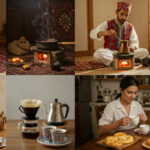










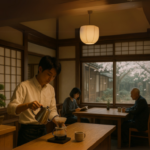




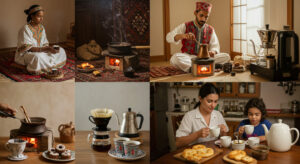








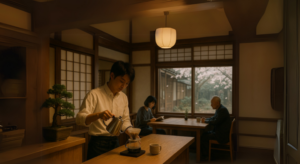
Post Comment